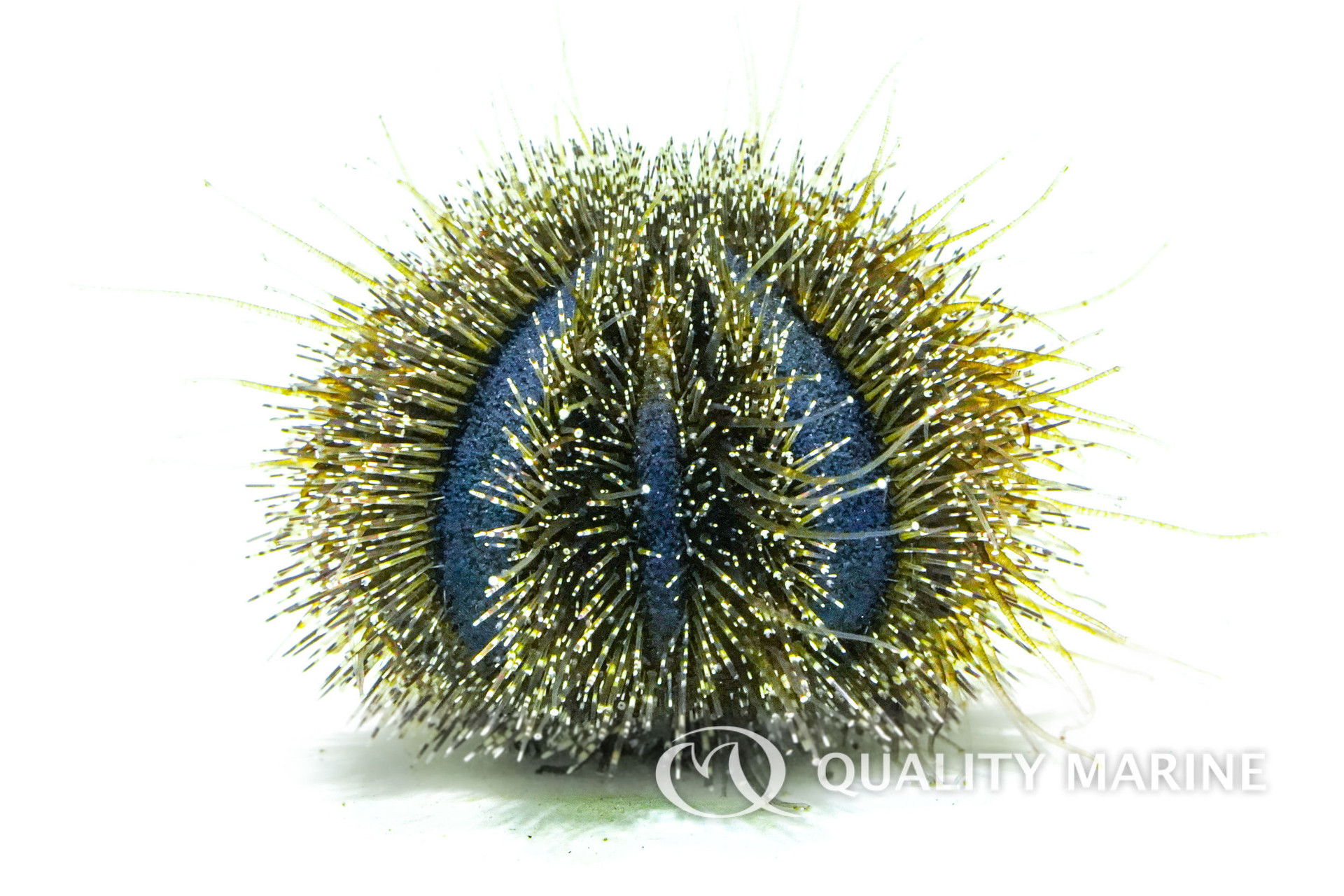Tuxedo Urchins and Coralline algae

We get many questions about Tuxedo Urchins and successful husbandry of them. Which is a bit of a puzzler, as Mespilia globulus is a really easy urchin to keep (regardless of the color you choose). It wasn't until we did a deep dive through a wide variety of websites and forums did we realize where hobbyists were going wrong. Many, many online sources say that this is an animal that requires low lighting. While the predominantly nocturnal Mespilia genus as a whole probably prefers low lighting, the food sources for this animal require some very bright lighting indeed.
It is true that Tuxedo Urchins are among the world's best rock scrubbers, never giving hair algae, or other nuisance growths a chance to get started. They also eat many other types of algae and importantly their diets should consist (at least in part) of coralline algae. The two are tied neatly together enough so we hesitate to talk about one without talking about the other. Coralline algae loves established aquariums and bright, broad spectrum light. Coralline algae is also basically impossible to supplement. Which means that new hobbyists, who have neither bright light, nor established aquariums are likely to have problems getting adequate nutrition to their pincushion.
Water parameters for success with Pincushions are the same as nearly every other common aquarium invertebrate. Keep the water temp as near to 78 degrees Fahrenheit as possible, pH should be 8.1 to 8.4, salinity as close to 1.056 as you can. Now the urchin itself will do fine in a range of dkh and calcium levels, but the coralline it needs will flourish in systems where these numbers are natural, available and stable. One of the myriad benefits related to using Tropic Marin salts is the availability of calcium to the organisms in your aquarium. It is one of the many reasons we rely upon it here at Quality Marine, and recommend it to all our customers. Don't skip your weekly (or even more often) water changes, and you should have very stable water quality and parameters perfect for coralline growth. Light is the other element of vital importance; any lighting set up capable of coral growth will also support coralline growth. The important factor here for the health and longevity of your pincushion urchin, is that you wait to add it until there is a good amount of coralline algae available for it to eat. While it will constantly be removing some of the algae, a healthy aquarium of 75 gallons and enough live rock should be able to grow more than enough coralline to keep the pincushion well fed and leave the aquarium never looking naked. As with ANY marine invertebrate, urchins are very sensitive to copper and so their aquariums should not be medicated.
Because you've read this far, you've proven yourself to be the kind of geek we are, here's some science. The bulk of the urchins on a coral reef are called “euechinoids” and tend to have a symmetrically rounded body (though not always so). Pincushions are among these; they tend to spend their days grazing away on algae with a specialized mouthpart known whimsically as Aristotles lantern. It contains rasp-like structures for grinding, making these one of the few invertebrates adept at feeding upon tougher algal species, like the coralline we've been talking about. Pretty much no “reef safe” snails can compete with this efficient level of herbivory, making sea urchins one of the most useful additions to a reef aquarium. All urchins share a very unique way of moving around the aquarium by using a water vascular system where water canals through the inside of the urchin pump water around the animal allowing their small tube feet to move and grab a variety of surfaces like little vacuum pumps.
Tuxedo Urchins got their name from their formal appearance and is a great addition to established and appropriately aquariums. Be sure there is enough space and thus food. Ensure all aquarium rockwork is very stable as urchins are surprisingly adept at making rockwork joints fail. If you see any urchin begin to lose spines, check the water parameters immediately because shedding is frequently an indicator of poor water quality. Follow these tips and you too can enjoy the incredibly useful, very attractive and nearly maintenance free aquarium invert known as the Tuxedo Urchin.
https://www.qualitymarine.com/news/spring-cleaning...